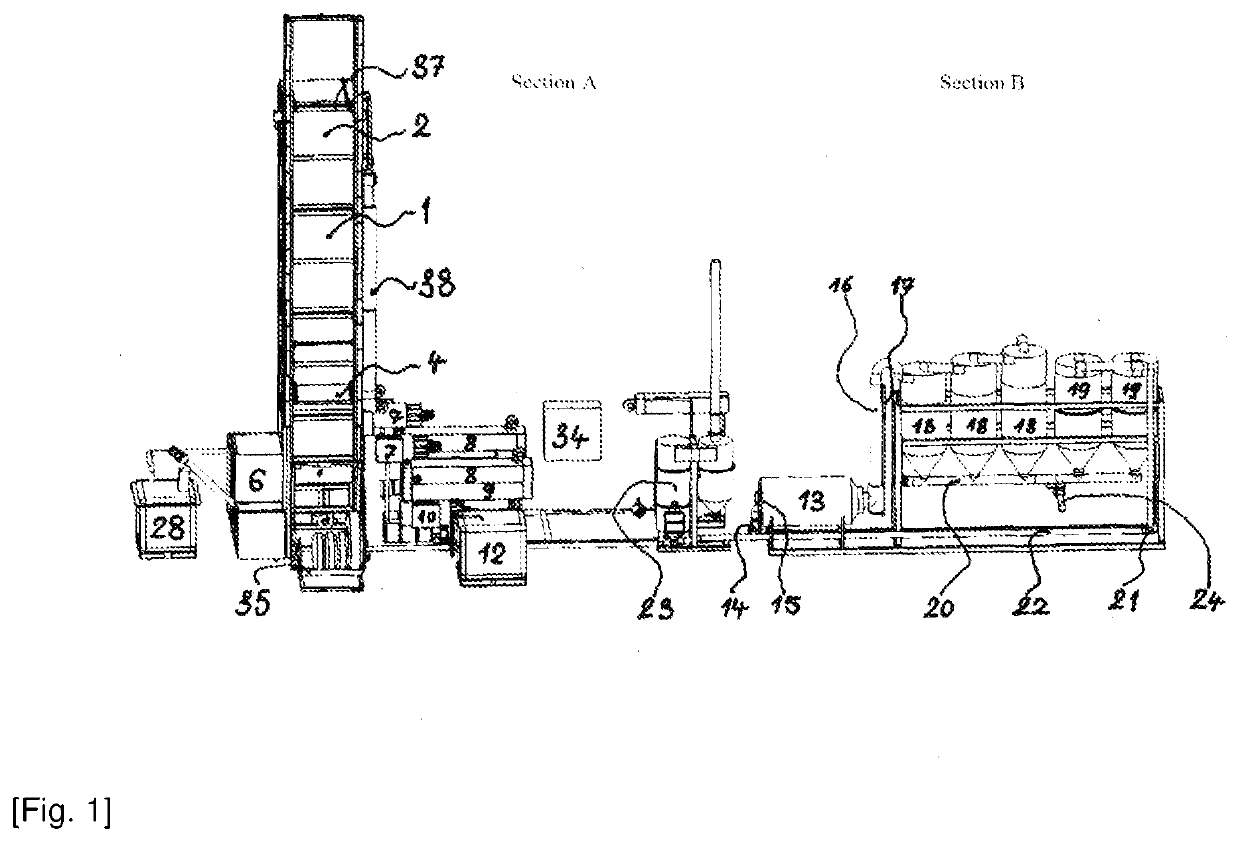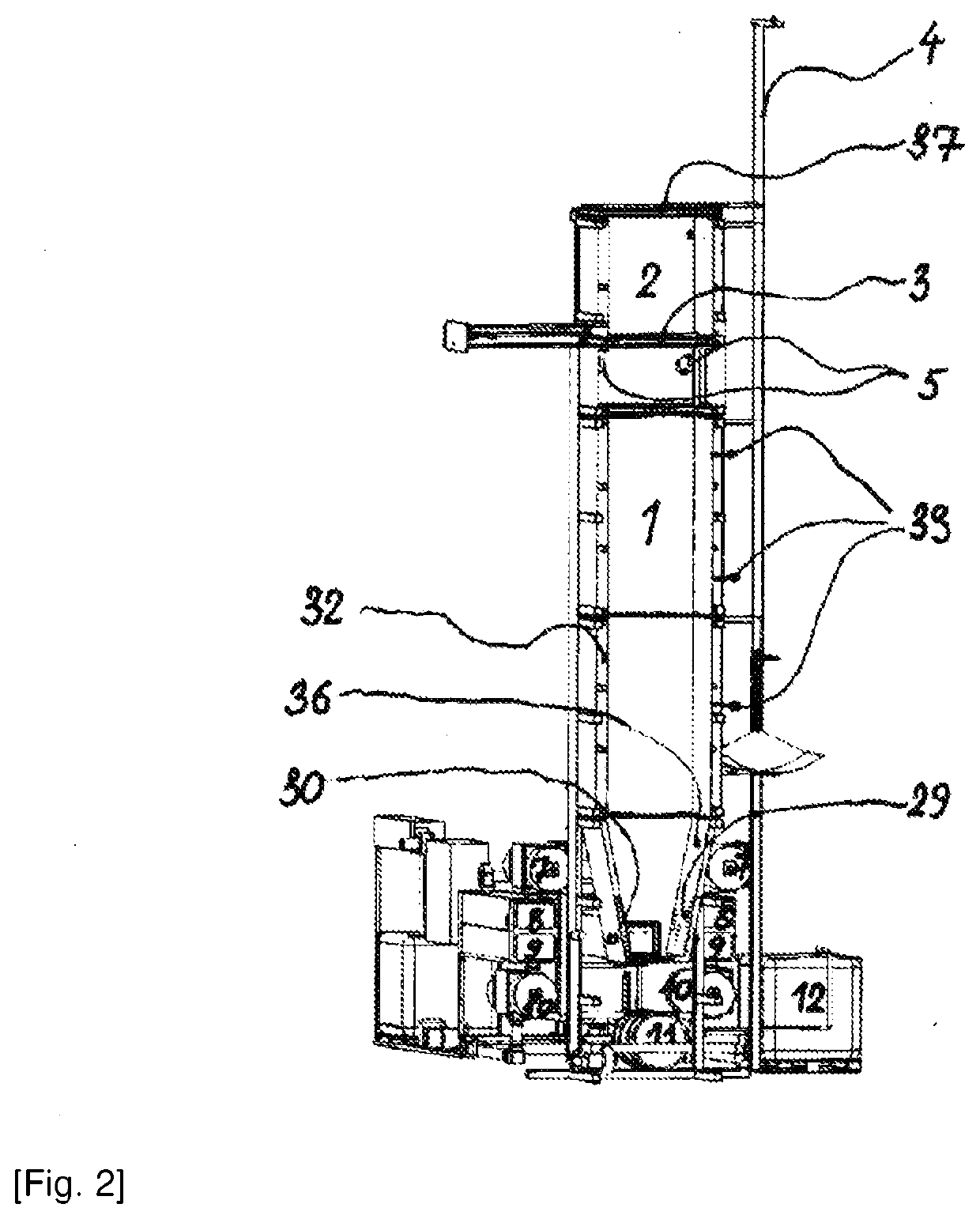A method for the continuous thermal processing of used, damaged or otherwise degraded tyres, and a device for carrying out this method
- Summary
- Abstract
- Description
- Claims
- Application Information
AI Technical Summary
Benefits of technology
Problems solved by technology
Method used
Image
Examples
Embodiment Construction
[0021]According to FIG. 1, the device for carrying out the method in the illustrated exemplary embodiment of the invention consists of or comprises two technological units, namely section A and section B. Section A includes all technological operations concerning tire decomposition, and section B then serves to process the obtained liquid hydrocarbons and produce rubber soot, wherein in the technological nodes associated with the elimination of sulphur dioxide, both these sections use a common end element of energetic after-burning of gases.
[0022]Section A is formed by a reactor 1, which is provided with a conveyor 4 in the form of a lift for loading its upper feeding chamber 2 with processed tires and for their continuous replenishment via this upper feeding chamber 2 into its inner reaction space. Reactor 1 is further provided with a control operating unit 34 and digital scale 35, delivering to the control operating unit 34 data on the amount of mass in the reactor 1. A closed out...
PUM
| Property | Measurement | Unit |
|---|---|---|
| Temperature | aaaaa | aaaaa |
| Temperature | aaaaa | aaaaa |
| Temperature | aaaaa | aaaaa |
Abstract
Description
Claims
Application Information
 Login to View More
Login to View More - Generate Ideas
- Intellectual Property
- Life Sciences
- Materials
- Tech Scout
- Unparalleled Data Quality
- Higher Quality Content
- 60% Fewer Hallucinations
Browse by: Latest US Patents, China's latest patents, Technical Efficacy Thesaurus, Application Domain, Technology Topic, Popular Technical Reports.
© 2025 PatSnap. All rights reserved.Legal|Privacy policy|Modern Slavery Act Transparency Statement|Sitemap|About US| Contact US: help@patsnap.com



